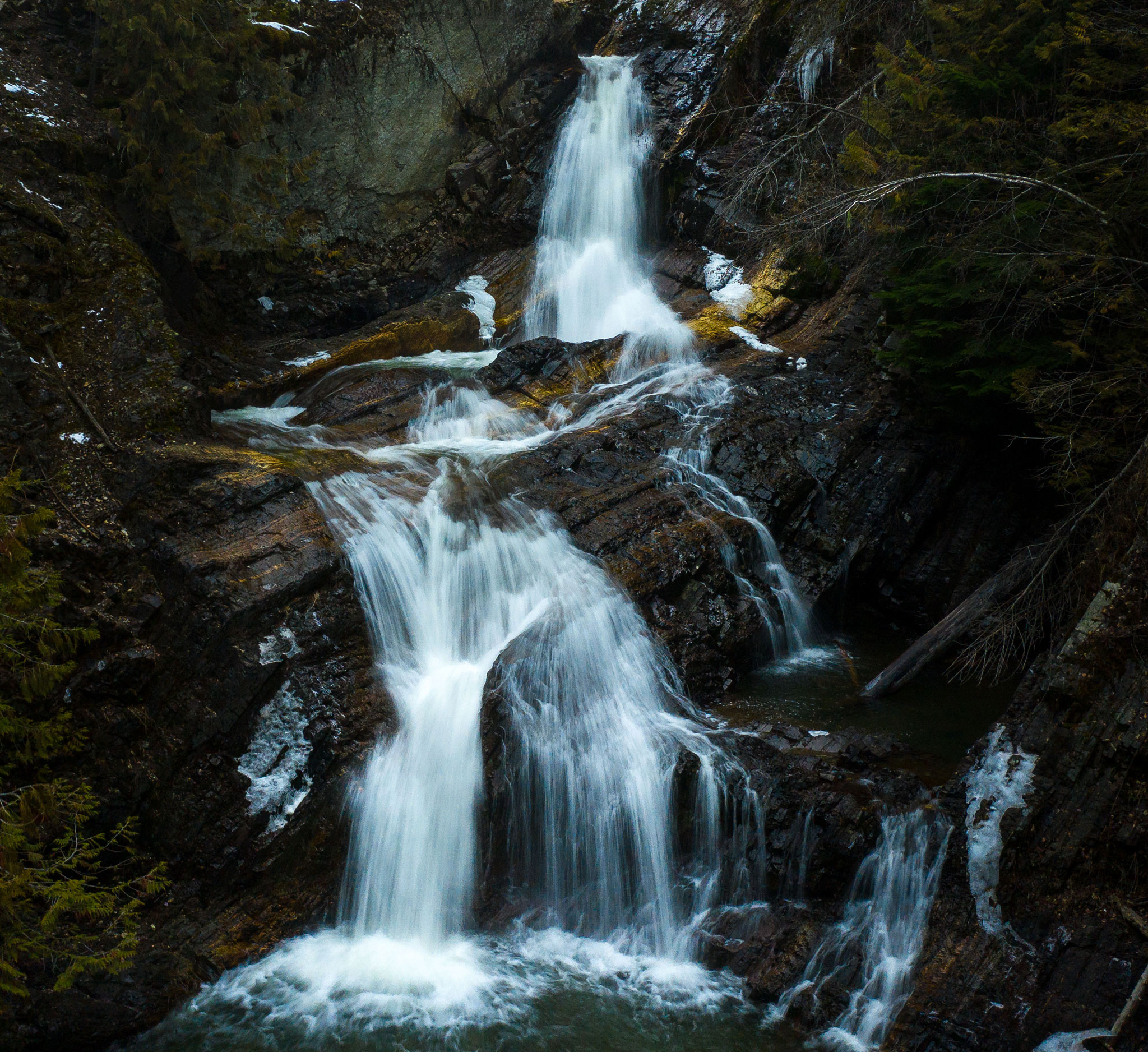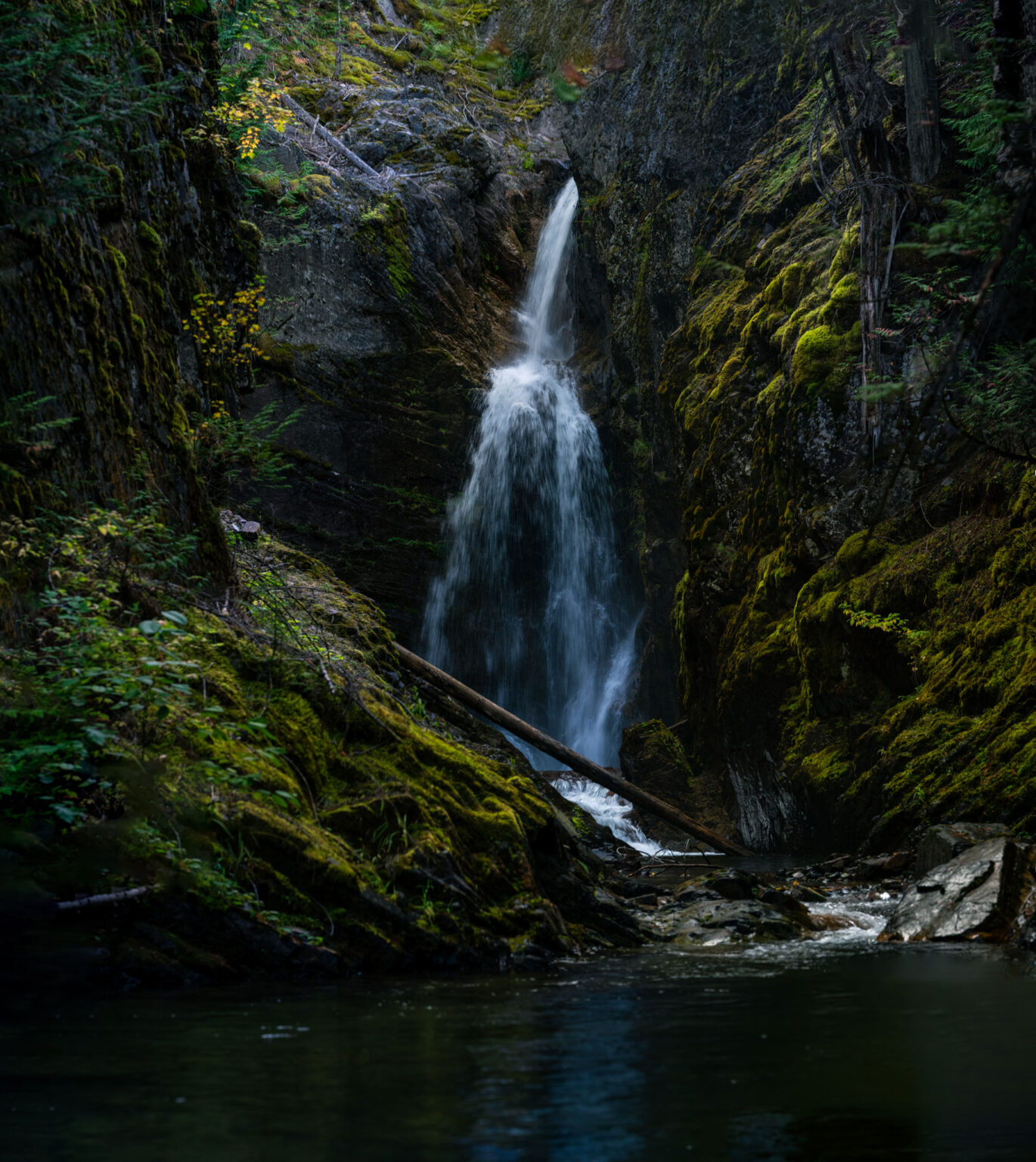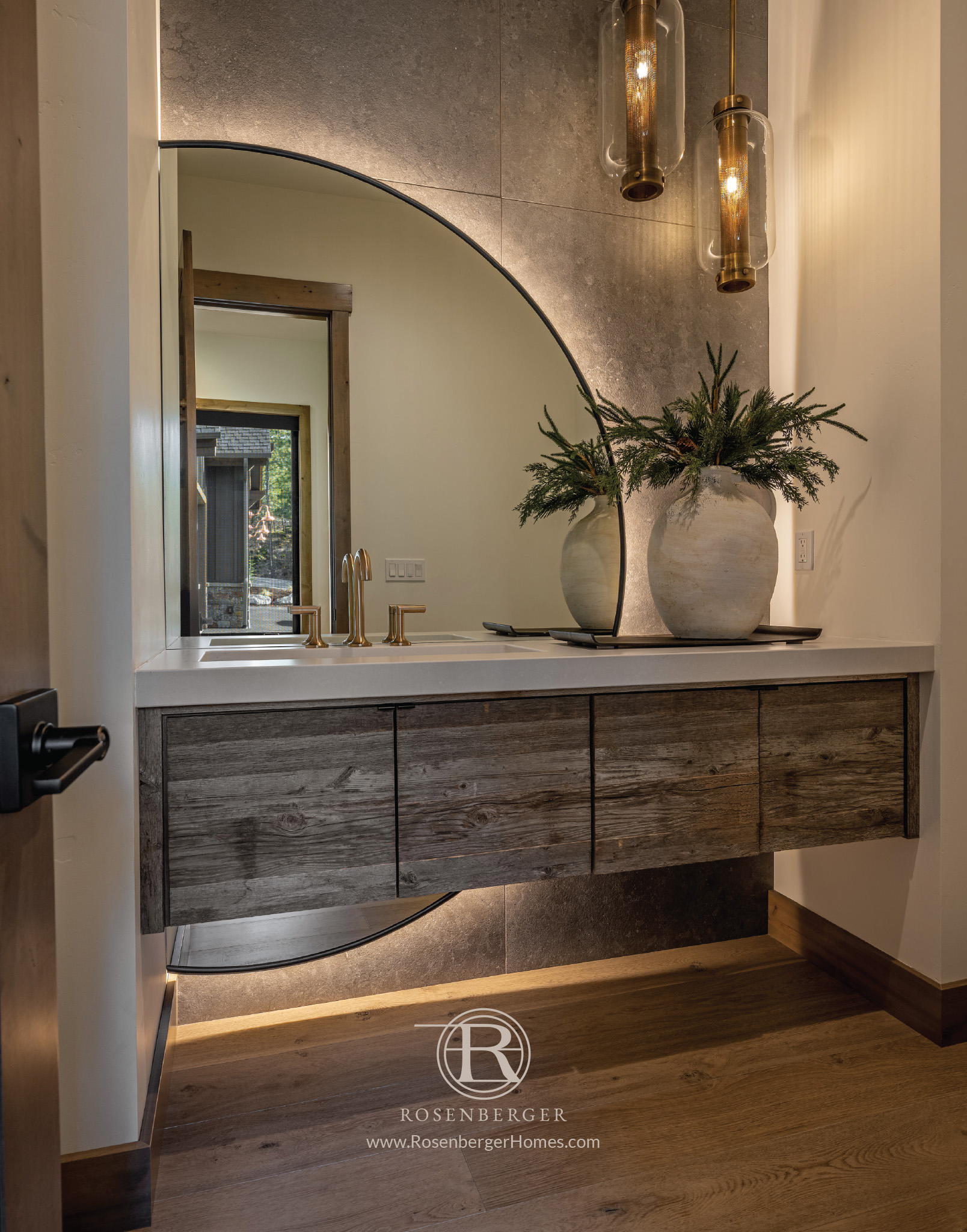I push my chair away from my desk at work, lean my head back against the headrest and stare at the ceiling. I quickly glance down at my watch. 4:30 p.m. Finally, it’s time to go home. Suddenly, my day seems a lot brighter; it has been a mind-numbing week at work and I have big plans for the weekend. The crew and I are going waterfall hunting.
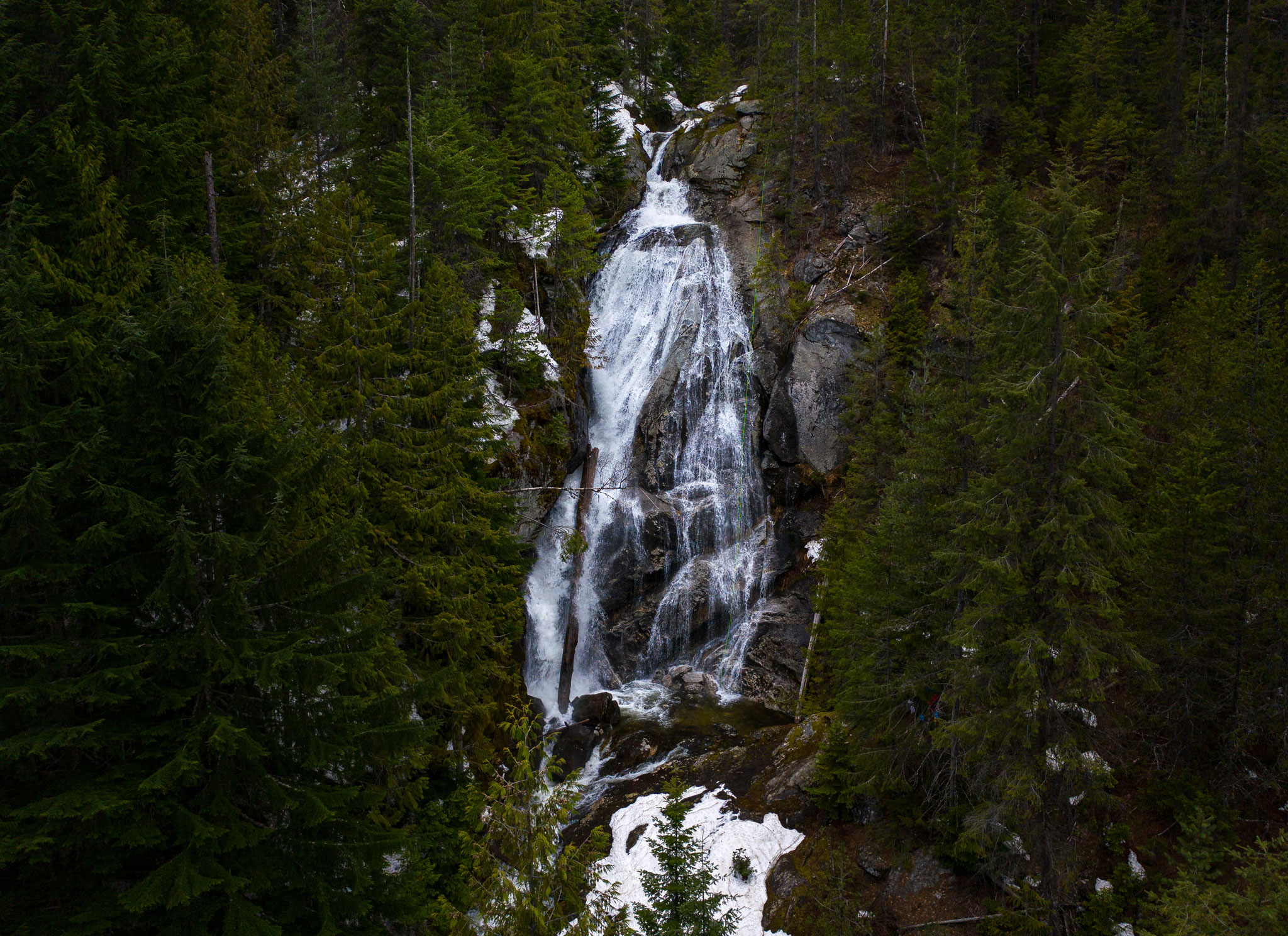
Our plan is to set out into the rugged and unforgiving mountains of Western Montana in search of never-before-documented waterfalls. We have our sights set on a couple of areas of interest and hope they will yield some spectacular results. At the very least, our research thus far has proven promising.
While reading a U.S. Fish and Wildlife study, I learned of a potential waterfall nestled in a bedrock canyon that acted as a major Bull Trout migration fish barrier. According to the report, this canyon rose up at least 250 feet vertically in less than a quarter mile. Furthermore, no one had been able to get into this canyon due to its ruggedness. With this information, I quickly located what I thought could be the falls in Google Earth.
I was beyond excited. I was pretty sure I had just found a monster, or series of monsters. I took a picture of my screen and texted it to my buddy Miles. “Dude! I think we have discovered the motherload of waterfalls.” He quickly responded, and it was obvious he could barely contain his excitement: “I know where we are going this weekend!” We traded more information for the next hour or so further assessing the discovery and determining how to get there. Once we agreed on the details, we called it a night.
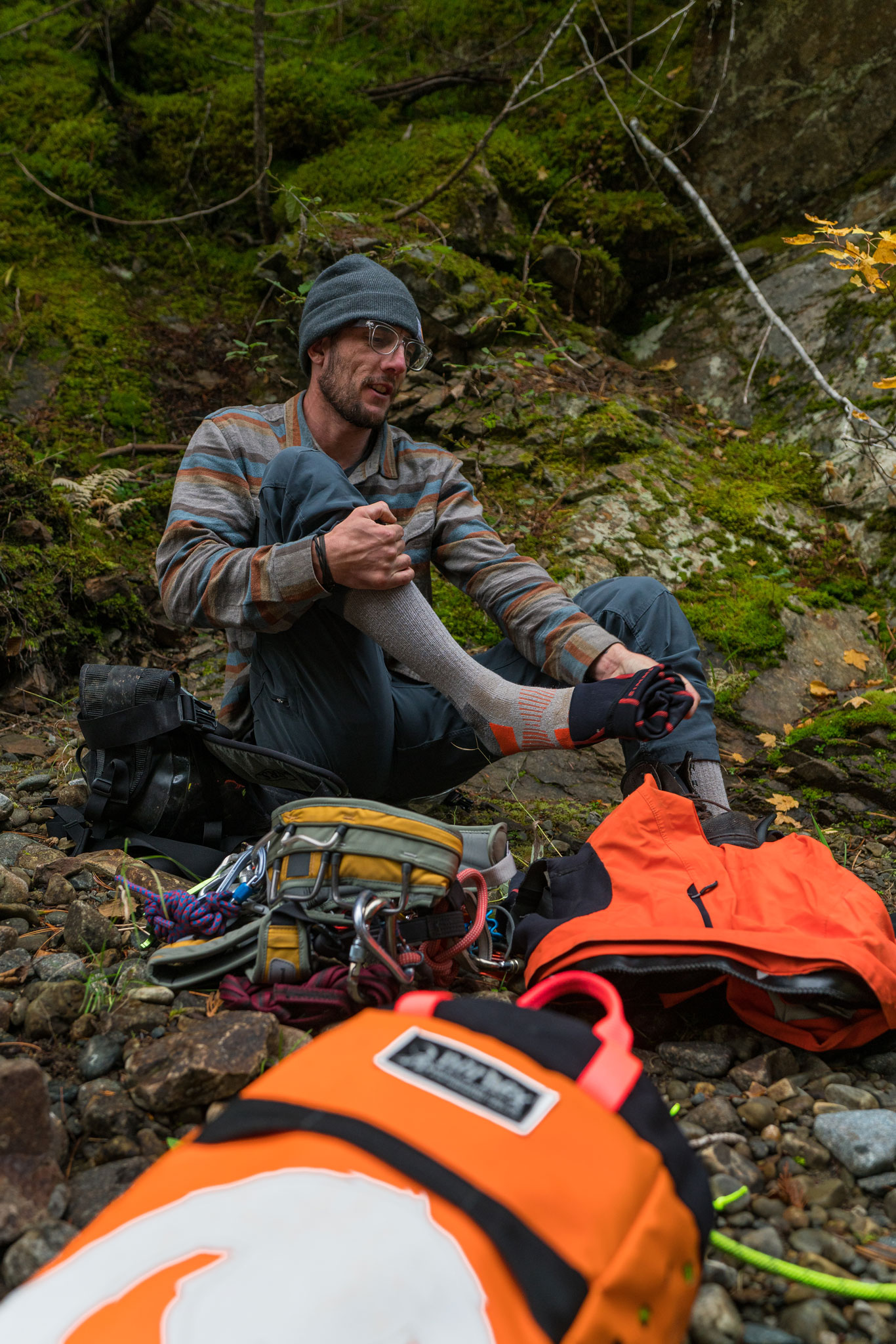
» Setting out
Saturday morning comes early. The crew and I meet up at 4 a.m. and begin to load the gear into the truck — cameras, tripods, jackets, tons of snacks and a plethora of climbing gear. Our research into this one led us to suspect that we might have to rappel down into a canyon in order to get to the base of the falls. After a two-hour drive and about 15 miles on some extremely muddy roads, we arrive at our destination.
Despite all of our efforts leading up to us standing on a random road in the middle of nowhere on a soggy Saturday morning, we still had not determined a route down into the canyon. This is where a drone comes in handy. One of our crew members, Jeff, brought his and quickly fires it up. He propels it high into the air above us and points it down the side of the mountain toward the creek — we are about to get our first real glimpse of our potential waterfalls.
Story continues after a quick message from our sponsor below.
As the trees and topography zooms by through the little screen in front of us, we notice the canyon gets noticeably steeper and more rugged. Suddenly, the trees all but stop, and the drone camera zooms past a precipice.
Beyond that precipice is a huge waterfall nestled tightly into a dark canyon. Above that waterfall is another waterfall and another, and another!
We yell out in excitement. All of our research has paid off. This is exactly what we came for, and it appears to be even better than we expected. Not only are the waterfalls absolutely breathtaking, the geology is spectacular as well. The cliff walls are made up of multi-colored layered rock folded over itself, over and over again. Much of it is deep reds, greens and gold interspersed with black stripes, giving it a sort of petrified wood look. All that is left to do is get down into the canyon and put our actual eyes on these drops.
We quickly organize our gear into our packs and consult the maps we have downloaded onto our phones. We are looking for any sort of relief in the topography that might mean a break in the cliff bands that would allow us “easy” access to the bottom. We spot one depression in the isobars and decide to try there first. We immediately leave the openness of the road and push into the dark and damp forest.
Dead twigs snap underfoot as we walk down the mountain and deeper into the forest; mushrooms are beginning to pop up here and there, and the moss that seems to be ubiquitous is beginning to turn that almost fluorescent green color as it has begun to awake from its winter slumber.
The deeper we wander, attempting to follow the relief in the mountain, the steeper it gets. Soon, we carefully make each step downward, often sidestepping and bracing ourselves against trees. One slip here would mean a nasty tumble or an out of control slide. We continue another 100 yards or so and come to our first major obstacle — a cliff band that we could not see from any of the digital or drone imagery. It is too tall to rappel with a single 70-meter rope and is still too far away from the river.
Undeterred, we climb back up the mountain a few hundred feet or so and traverse upstream looking for another weakness in the geography. We find another promising, but very steep draw. Excitedly, we slowly pick our way down farther and farther into the canyon. We can now hear the roar of the creek and the waterfalls. Finally, the trees begin to thin out and the ground becomes much more rocky and exposed. Alas! We are at the creek. Or are we? We can see the creek clearly; we are only 40-50 feet above it. Unfortunately, we have gone too far upstream and are now above the main canyon.
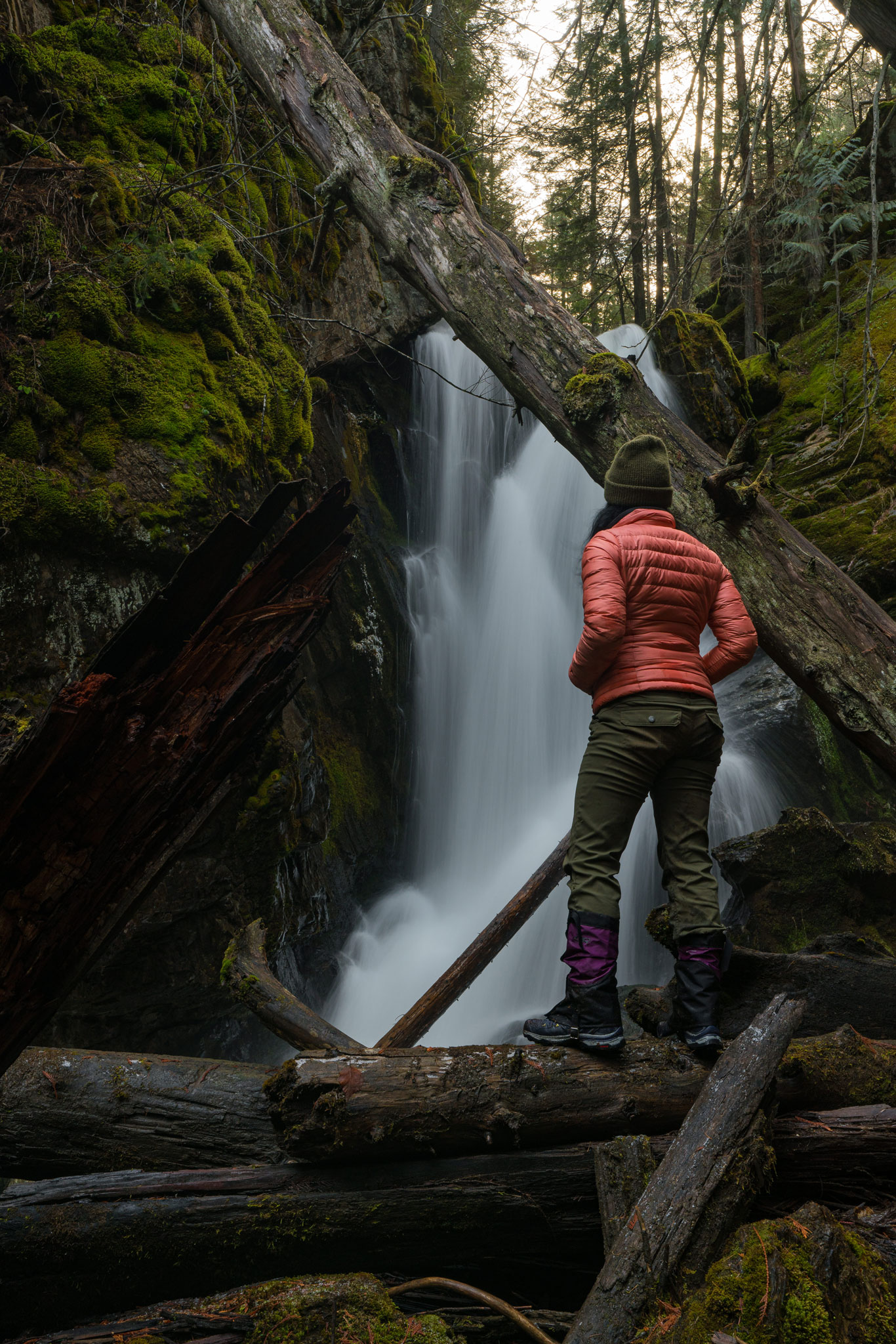
At this point, we are beginning to collectively feel the frustration and exhaustion seep in. We have descended the majority of this mountainside twice now and are still coming up empty handed. We decide to pick our way over to a small clearing in the trees. While perched precariously in this clearing on the edge of a cliff, Jeff re-launches his drone in the hopes of spotting a better route down to the falls. After a few minutes, he explains that he thinks he may have found a way.
Again, we trudge and clamber our way back up several hundred vertical feet and back downstream a little ways. Earlier, we had walked by a nasty looking little gully and hadn’t given it a second thought. What we couldn’t tell before, that the drone revealed, was that it led to a much more open, albeit extremely steep chute leading right down to the base of the middle falls.
We excitedly pick our way down through the thick trees to the opening of the chute. I rig up an anchor and toss the rope down the chute. One by one, we all rappel down, taking care not to dislodge any rocks. After a short time, we are all safely at the bottom, relieved and now in complete awe at the sight before us.
After all the time, research, and effort, we have finally made it into the belly of the beast. We are standing at the base of a 60-foot tall waterfall that has carved its way through some of the most spectacularly colored bedrock we have ever seen. Directly above this waterfall is another 80-foot tall one, and directly below is a 30-footer that leads into a final 120-foot fall.
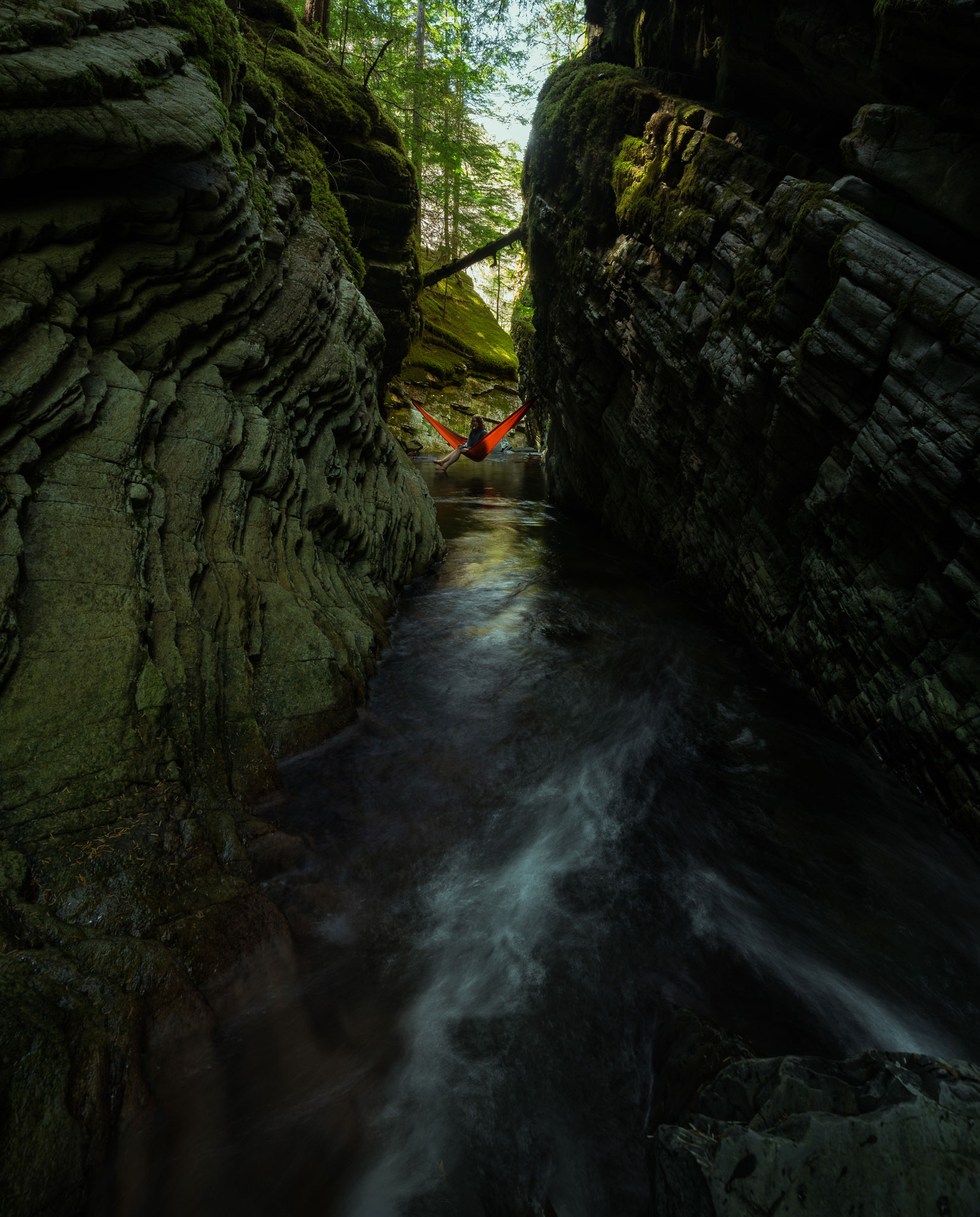
p.p1 {margin: 4.5px 0.0px 0.0px 0.0px; line-height: 14.5px; font: 7.0px Gotham} span.s1 {letter-spacing: -0.1px}
Sometimes the journey to the falls is just as stunning as the falls themselves. A slot canyon deep in the mountains of North Idaho.
After shooting photos of the falls for a while, we decide it is time to head back up. It will be dark soon and we do not want to be caught trying to climb out of this canyon after sunset. Luckily, we still have our rappel line set up. Using it as a hand line we clamber back to the top of the chute. A short while later we stumble back out on the road, out of breath but beyond stoked that we have truly found the monsters in the mist.
» Advice from the team
When hunting off-trail waterfalls, it is imperative you keep a few important things in mind. Safety is paramount. Most of these places are extremely remote and rugged. Never go down into a canyon that you are not absolutely sure you can get out of. It is often easier to go down than to come back up. Always tell someone where you plan on going and when you plan on being back.
Finally, be excited about your finds. Document your discoveries if you so choose, but please do not divulge their locations online. Avoid geotags and specific names when posting on the internet. The evidence that these practices are destructive is overwhelming. Instead of providing the world an easy, effortless way to flock to a place en masse through a geotag or specific location, inspire them to get out there and find their own adventure in the same way you did. Leave the places you visit as if you had never been there. N
Story & Photography By Chris Celentano
As Featured In: Summer/Fall 2022
